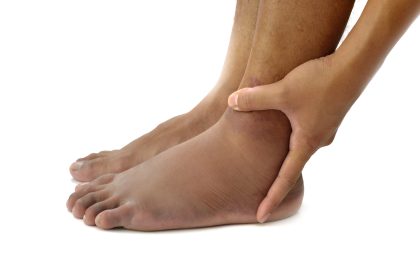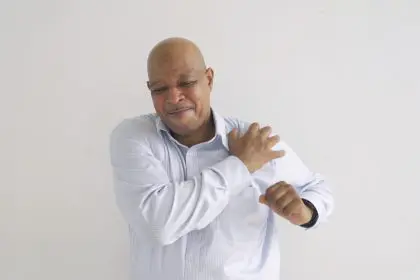Vertigo affects millions of people worldwide, creating a disorienting sensation where the world seems to spin uncontrollably around them. This debilitating condition goes far beyond simple dizziness, often leaving sufferers feeling nauseated, unsteady, and unable to perform normal daily activities. While many people associate vertigo with heights or motion sickness, the actual causes stem from complex interactions within the body’s balance systems.
The human balance system relies on precise coordination between the inner ear, eyes, and brain to maintain spatial orientation and stability. When any component of this intricate system malfunctions, vertigo can result, creating symptoms that range from mild unsteadiness to severe spinning sensations that make standing or walking impossible.
Understanding the various causes of vertigo empowers individuals to recognize potential triggers, seek appropriate treatment, and take preventive measures when possible. Many vertigo causes are treatable once properly identified, making accurate diagnosis crucial for effective management and symptom relief.
1. Benign positional vertigo disrupts inner ear crystals
Benign paroxysmal positional vertigo, commonly known as BPPV, represents the most frequent cause of vertigo episodes. This condition occurs when tiny calcium carbonate crystals called otoconia become dislodged from their normal position in the inner ear and migrate into the semicircular canals where they interfere with normal balance signaling.
The displaced crystals create false motion signals when the head moves in certain positions, triggering intense spinning sensations that typically last less than a minute but can be extremely disorienting. Common triggers include rolling over in bed, looking up at high shelves, or bending forward to tie shoes.
BPPV often develops without obvious cause, though head injuries, prolonged bed rest, and age-related changes in the inner ear can increase risk. The condition affects women more frequently than men and becomes more common with advancing age as the inner ear structures naturally deteriorate.
While BPPV episodes can be frightening, the condition is generally harmless and often resolves spontaneously over time. However, specific head positioning maneuvers performed by healthcare professionals can immediately relocate the displaced crystals and provide rapid symptom relief.
2. Inner ear infections create inflammatory chaos
Vestibular neuritis and labyrinthitis represent inflammatory conditions affecting the inner ear structures responsible for balance and hearing. These infections typically result from viral illnesses that spread to the delicate balance organs, creating swelling and irritation that disrupts normal function.
Vestibular neuritis affects only the balance portion of the inner ear, causing severe vertigo, nausea, and balance problems without hearing loss. Labyrinthitis involves both balance and hearing structures, creating vertigo accompanied by hearing loss and sometimes ear pain or fullness.
These inflammatory conditions often follow upper respiratory infections, with viruses traveling through connecting pathways to reach the inner ear. The resulting inflammation can persist for days or weeks, creating prolonged vertigo episodes that gradually improve as the infection resolves and inflammation subsides.
Recovery from inner ear infections varies significantly between individuals, with some people experiencing complete resolution within days while others may have lingering balance problems for months. Early treatment with anti-inflammatory medications and balance therapy can help speed recovery and reduce symptom severity.
3. Meniere’s disease creates fluid pressure problems
Meniere’s disease involves abnormal fluid accumulation in the inner ear, creating increased pressure that affects both hearing and balance function. This chronic condition typically develops in one ear initially but may eventually affect both ears in some individuals.
The characteristic symptoms of Meniere’s disease include episodic vertigo lasting hours, fluctuating hearing loss, ear fullness or pressure, and tinnitus or ringing in the affected ear. These symptoms often occur together during acute episodes, followed by periods of relative normalcy between attacks.
The exact cause of abnormal fluid accumulation in Meniere’s disease remains unclear, though factors such as viral infections, autoimmune reactions, genetic predisposition, and circulatory problems may contribute to its development. Stress and dietary factors including high sodium intake can trigger episodes in susceptible individuals.
Managing Meniere’s disease requires comprehensive approaches including dietary modifications, stress management, medications to control symptoms, and sometimes surgical interventions for severe cases. The unpredictable nature of episodes can significantly impact quality of life and requires ongoing medical management.
4. Migraine headaches trigger vestibular symptoms
Vestibular migraines represent a common but often unrecognized cause of vertigo, particularly in individuals with histories of traditional headache migraines. These episodes can occur with or without actual head pain, making diagnosis challenging when vertigo appears as an isolated symptom.
The connection between migraines and vertigo involves shared neural pathways and neurotransmitter systems that affect both pain processing and balance function. Changes in brain chemistry during migraine episodes can directly impact the vestibular system, creating spinning sensations, motion sensitivity, and spatial disorientation.
Vestibular migraine triggers often mirror those of traditional migraines, including hormonal fluctuations, certain foods, stress, sleep changes, and environmental factors like bright lights or strong odors. Weather changes and barometric pressure fluctuations can also precipitate episodes in sensitive individuals.
Treatment approaches for vestibular migraines combine traditional migraine management strategies with vestibular therapy techniques. Identifying and avoiding personal triggers, maintaining regular sleep schedules, and using preventive medications can significantly reduce episode frequency and severity.
5. Medications create balance system interference
Numerous medications can cause vertigo as a side effect by interfering with inner ear function, brain processing, or blood pressure regulation. Ototoxic medications, which are toxic to the ear structures, can directly damage the delicate balance organs and create persistent vertigo symptoms.
Common medication categories that can trigger vertigo include certain antibiotics, diuretics, aspirin in high doses, some antidepressants, and blood pressure medications. The risk often correlates with dosage levels and individual sensitivity, with older adults being particularly vulnerable to medication-induced balance problems.
Loop diuretics used for heart failure and high blood pressure can affect inner ear fluid balance, while some antibiotics can damage the hair cells responsible for detecting motion and position. Even over-the-counter medications like aspirin can cause temporary vertigo when taken in large quantities.
Medication-induced vertigo often resolves when the offending drug is discontinued or the dosage is reduced, though some damage may be permanent depending on the medication type and duration of exposure. Healthcare providers must carefully balance the benefits of necessary medications against potential vestibular side effects.
6. Blood pressure fluctuations affect brain circulation
Both high and low blood pressure can contribute to vertigo through effects on brain circulation and inner ear blood supply. Sudden drops in blood pressure when standing up, known as orthostatic hypotension, create temporary inadequate blood flow to the brain and balance centers.
Hypertension can cause vertigo through various mechanisms, including effects on small blood vessels in the inner ear and brain stem areas responsible for balance processing. The medications used to treat high blood pressure can also contribute to dizziness and balance problems as side effects.
Dehydration, blood loss, heart rhythm abnormalities, and certain medications can all contribute to blood pressure fluctuations that trigger vertigo episodes. The symptoms often correlate with position changes, particularly when moving from lying or sitting to standing positions.
Managing blood pressure-related vertigo requires addressing underlying cardiovascular issues while carefully monitoring medication effects on balance function. Gradual position changes, adequate hydration, and compression stockings can help minimize orthostatic symptoms.
7. Neck problems create cervical vertigo
Cervical vertigo results from problems in the upper neck region that affect the complex nerve and blood vessel networks connecting the neck to the brain and inner ear. Whiplash injuries, arthritis, and muscle tension can all contribute to this type of balance dysfunction.
The upper cervical spine contains numerous sensory receptors that provide positional information to the brain’s balance centers. When neck injuries or degenerative changes affect these receptors, conflicting signals can create vertigo, particularly with head and neck movements.
Blood vessel compression or irritation in the neck region can also reduce circulation to the brain stem and inner ear structures, contributing to vertigo symptoms. This mechanism may explain why some people experience dizziness with certain neck positions or movements.
Cervical vertigo often accompanies neck pain, headaches, and movement restrictions, helping differentiate it from other vertigo causes. Treatment typically involves physical therapy, manual treatments, and addressing underlying neck problems that contribute to the balance dysfunction.
8. Anxiety and stress amplify balance sensitivity
Psychological factors including anxiety, panic attacks, and chronic stress can both trigger and worsen vertigo episodes through complex mind-body connections. The vestibular system has direct neural connections to brain areas involved in anxiety and stress responses.
Anxiety-related vertigo often creates a vicious cycle where initial balance symptoms trigger anxiety responses, which then amplify the vertigo sensations and create additional symptoms like rapid heartbeat, sweating, and feelings of panic or impending doom.
Hyperventilation during anxiety episodes can alter blood chemistry in ways that affect brain function and balance processing, contributing to lightheadedness and spinning sensations. The resulting symptoms can be indistinguishable from those caused by inner ear problems.
Stress management techniques, cognitive behavioral therapy, and sometimes anti-anxiety medications can help break the cycle of anxiety-related vertigo. Addressing underlying psychological factors often provides significant improvement in both balance symptoms and overall quality of life.
9. Head injuries damage delicate balance structures
Traumatic brain injuries and head trauma can cause both immediate and delayed vertigo through direct damage to inner ear structures, brain stem areas, or the neural pathways connecting balance organs to processing centers. Even seemingly minor head injuries can have lasting effects on balance function.
Post-traumatic vertigo can result from several mechanisms including BPPV from displaced ear crystals, direct damage to vestibular organs, brain injury affecting balance processing areas, or neck injuries that accompany head trauma.
The symptoms of post-traumatic vertigo may not appear immediately after injury, sometimes developing days or weeks later as inflammation subsides and the full extent of damage becomes apparent. This delayed onset can make the connection between injury and symptoms less obvious.
Recovery from head injury-related vertigo varies widely depending on the injury severity and structures affected. Some individuals recover completely within weeks, while others may have persistent balance problems requiring long-term rehabilitation and management strategies.
10. Age-related changes affect multiple systems
Natural aging processes affect all components of the balance system, including inner ear structures, vision, proprioception, and brain processing capabilities. These cumulative changes increase vertigo risk and make older adults more susceptible to balance-related falls and injuries.
The inner ear undergoes gradual deterioration with age, including loss of sensory hair cells, changes in fluid composition, and structural alterations that affect normal function. These changes can create chronic mild imbalance or increase susceptibility to acute vertigo episodes.
Vision changes associated with aging, including cataracts, macular degeneration, and reduced depth perception, remove important visual cues that help maintain balance. When combined with inner ear changes, these visual deficits significantly increase fall risk and balance dysfunction.
Medication use typically increases with age, creating additional risks for drug-induced vertigo and interactions between multiple medications that can affect balance function. Polypharmacy presents particular challenges for older adults managing multiple chronic conditions.
Understanding symptom patterns and seeking help
Recognizing the specific characteristics of vertigo episodes can provide important clues about underlying causes and guide appropriate treatment approaches. The timing, duration, triggers, and associated symptoms often point toward particular diagnostic categories.
True vertigo involves a sensation of movement or spinning, while other types of dizziness may feel like lightheadedness, unsteadiness, or floating sensations. These distinctions help healthcare providers narrow down potential causes and develop targeted treatment plans.
Emergency medical attention becomes necessary when vertigo accompanies severe headaches, vision changes, weakness, numbness, difficulty speaking, or high fever. These combinations may indicate serious conditions requiring immediate evaluation and treatment.
Keeping detailed records of vertigo episodes, including triggers, duration, associated symptoms, and any relief measures that help, provides valuable information for healthcare providers attempting to identify specific causes and develop effective treatment strategies.
Most vertigo causes respond well to appropriate treatment once properly diagnosed, offering hope for symptom relief and improved quality of life. Early evaluation and intervention often prevent progression of underlying conditions and reduce the impact of balance problems on daily activities.


















